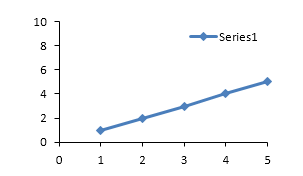
To facilitate the submission process and the subsequent follow-up process, please consider the following guidelines, information, tips, terms, and deadlines mentioned.
General guidelines:
- The congress accepts papers as abstracts or extended abstracts.
- Papers will be collected by online abstract system.
- Abstracts submitted by email, faxed or hard copy (posted or hand-delivered) will not be processed.
- Abstracts must be received by the announced deadline. Abstracts received after the deadline will not be considered.
- Abstracts may be submitted for oral presentation or poster presentation.
- Presenting authors must be registered participants. Only abstracts of authors who have paid their registration fees will be scheduled for presentation and included for publication.
- All abstracts should be submitted and presented in clear English with accurate grammar and spelling of a quality suitable for publication.
- Only abstracts with results will be accepted for review. Abstracts stating “data will be discussed in the presentation” will NOT be accepted.
- The names and addresses of the institutions in which the authors work should be clearly indicated.
Example: Department of XXXXX, Faculty of XXXXX, University name, City name, Country name. - If an abbreviation is used in the abstract, the abbreviated name of the abbreviation should be specified in parentheses.
Abstract Submission Details
- Abstract submissions open on Sundays 05th May 2024
- The abstract submission deadline is Friday 5th July 2024
- Register to the system using the “Sign Up” link and create a new account.
- After signing up, explanations on the page will help you to proceed. Please read the messages and explanations carefully.
- The abstract file can only be uploaded in a .doc, and .docx format and should not be larger than 10 MB.
- A confirmation message will be sent to the corresponding author’s e-mail address after the abstract submission is completed. Please keep this confirmation mail. If this e-mail doesn’t appear, please check your Spam/Bulk/Junk folder.
- The entire evaluation process can be pursued through the corresponding author’s account and e-mail.
- Please contact us if you have not received confirmation that your abstract has been submitted.
Please do not submit multiple copies of the same abstract. - For technical support or questions during submission, contact with :
Tel: +98 (044) 32770508 from 09:00 to 15:00 on weekdays (Tehran time), 1icvmp.urmia@gmail.com
Abstract guidelines:
Title (Times New Roman, 14 Font Size, Bold, Centered)
1st Author’s Name and Surname1, 2nd Author’s Name and Surname2, .... (12 font size; Centered)
1Affiliation, 2Affiliation, …. (12 font size; Centered)
E-mail of corresponding author (12 font size; Centered)
The name of all authors should be listed and the main presenter should be underlined.
Unstructured abstract including a single paragraph that briefly summarizes each main section of the paper without any subdivisions. It should be written in a paragraph with 12 font size, Times New Roman, single line spacing. The abstract must not exceed 250 words, excluding the full title, title, author’s name, surname, affiliations, and references.
Keywords: This section should contain maximum 5 words separated by comma.
References: Maximum 3 references should be provided.
References Guidelines
References should be numbered consecutively in the order in which they are first mentioned in the text (not in alphabetic order). In-text references should be cited in parentheses by their corresponding number (#). Software programs that automatically create endnotes, footnotes, and references should not be used. In References section, citations in non-English languages should be translated into English, and the original language has to be mentioned in square brackets [Turkish], for example. Journal titles in the Reference section should be abbreviated in accordance with the National Library of Medicine (NLM) and Index Medicus. The following is the style used for common types of references:
Journal article with one, two, or three authors:
Uzun A, Cengiz N, Kavaklı A. Morphological and microscopical examination of the rat brachial plexus [Turkish]. Turk J Vet Anim Sci 2001; 25(3): 397-402.
Journal article with more than three authors:
Liu C, Yu K, Bai J, et al. Experimental study of tendon sheath repair via decellularized amnion to prevent tendon adhesion. PLoS ONE. 2018;13(10):e0205811. doi: 10.1371/journal.pone.0205811.
Book with a single author:
Gretchen LH. Animal tissue techniques. 4th ed. San Francisco, USA: WH Freeman 1979; 51-119.
Book with multiple authors:
Aronoff GR, Berns JS, Brier ME, et al. Drug prescribing in renal failure. 4th ed. Philadelphia, USA: American College of Physicians 1999; 39-45.
Chapter in a book with editors:
Nordin M, Lorenz T, Campello M. Biomechanics of tendons and ligaments. In: Nordin M, Frankel VH (Eds). Basic biomechanics of musculoskeletal system. 3rd ed. Maryland, USA: Lippincott Williams & Wilkins 2001; 102-125.
Conference proceedings:
Davidson EB. Treatment of mammary tumors in dogs and cats. In Proceedings: North American veterinary conference. Orlando, USA 2003; 1036-1038.
Thesis:
Koyun M. The helminths fauna of some fishes in Enne Dam Lake. PhD. Thesis, Uludag University Science Institution. Bursa, Turkey: 2000.
Electronic material:
Animal and plant health inspection service website. Bovine spongiform encephalopathy (BSE). Available at: www.aphis.usda.gov/ipa/issues/bse/bse.html. Accessed Feb 18, 2020.
Manual:
CLSI. Auto verification of Medical Laboratory Results for Specific Disciplines. 1st ed. CLSI guideline AUTO15. Wayne, PA: Clinical and Laboratory Standards Institute; 2019.
A sample abstract is provided for your reference below.
Extended abstract guidelines:
Title (Times New Roman, 14 Font Size, Bold, Centered)
1st Author’s Name and Surname1, 2nd Author’s Name and Surname2, .... (12 font size; Centered)
1Affiliation, 2Affiliation, …. (12 font size; Centered)
E-mail of corresponding author (12 font size; Centered)
The extended abstract must contain the following sections: Abstract, Keywords, Introduction, Materials and Methods, Results, Discussion, and References.
Unstructured abstract including a single paragraph that briefly summarizes each main section of the paper without any subdivisions. It should be written in one paragraph with 12 font size, Times New Roman, single line spacing. It should contain 150 to 250 words.
Keywords: This section should contain maximum 5 words separated by comma.
The name of all authors should be listed and the main presenter should be underlined.
The extended abstract shall be written in font Times New Roman, single line spacing and 12 font size. It should contain a minimum of 1500 and a maximum of 2000 words in maximum 10 pages. The extended abstracts can contain figures and tables which are not included in the word count. The references are not included in the word count. The page format should be A4 page size with margins of 2.5 cm from the right, left, top and bottom. The pages should be numbered.
The supporting figures, tables and images (no more than three) may be included in the extended abstract. The figures and images must be numbered and figure legends should be placed under the figure or image. 300 DPI is the standard print resolution for high resolution output. The same data should not be presented in both table and graph form or repeated in the text. Similarly, the tables should also be numbered, and the table caption should be placed at the top (See examples). Please ensure the figures and tables are included in the paper file and are placed next to the relevant text in the paper.

Fig. 1. Legend….
Table 1. Caption…
|
|
|
|
|
|
|
|
|
|
|
|
|
|
|
Introduction (Times New Roman, 12 font size, bold)
The introduction section should (1) Present the problem and the proposed solution, (2) Presents nature and scope of the problem investigated, (3) Reviews the relevant literature to orient the reader.
Methodology (Times New Roman, 12 font size, bold)
The methodology must be clearly stated and described in sufficient detail with appropriate references. The author shall explain the research question, describe the research framework, and outline the methods applied in detail. This section should highlight why the particular research question is relevant to theory and practice, and why the chosen method(s) is (are) suited to the problem.
Results (Times New Roman, 12 font size, bold)
The findings are described in detail in this section.
Discussion (Times New Roman, 12 font size, bold)
Discussion should include (1) the principles and generalizations inferred from the results, (2) any exceptions, problems or limitations of the work, (3) theoretical and/or practical implications of the work, and (4) conclusions drawn and recommendations.
References
References should be between 5 to 15. References should be numbered consecutively in the order in which they are first mentioned in the text (not in alphabetic order). In-text references should be cited in parentheses by their corresponding number (#). Software programs that automatically create endnotes, footnotes, and references should not be used. In References section, citations in non-English languages should be translated into English, and the original language has to be mentioned in square brackets [Turkish], for example. Journal titles in the Reference section should be abbreviated in accordance with the National Library of Medicine (NLM) and Index Medicus. Extended abstracts will use the same citation format as listed above.
A sample extended abstract is provided for your reference below.
Registration
2024-04-20Paper submission
2024-05-05First submission deadline
2024-07-05Extended submission deadline
2024-08-05**Final submission deadline**
2024-09-10Review deadline
2024-09-25Conference start
2024-10-21Conference end
2024-10-22







